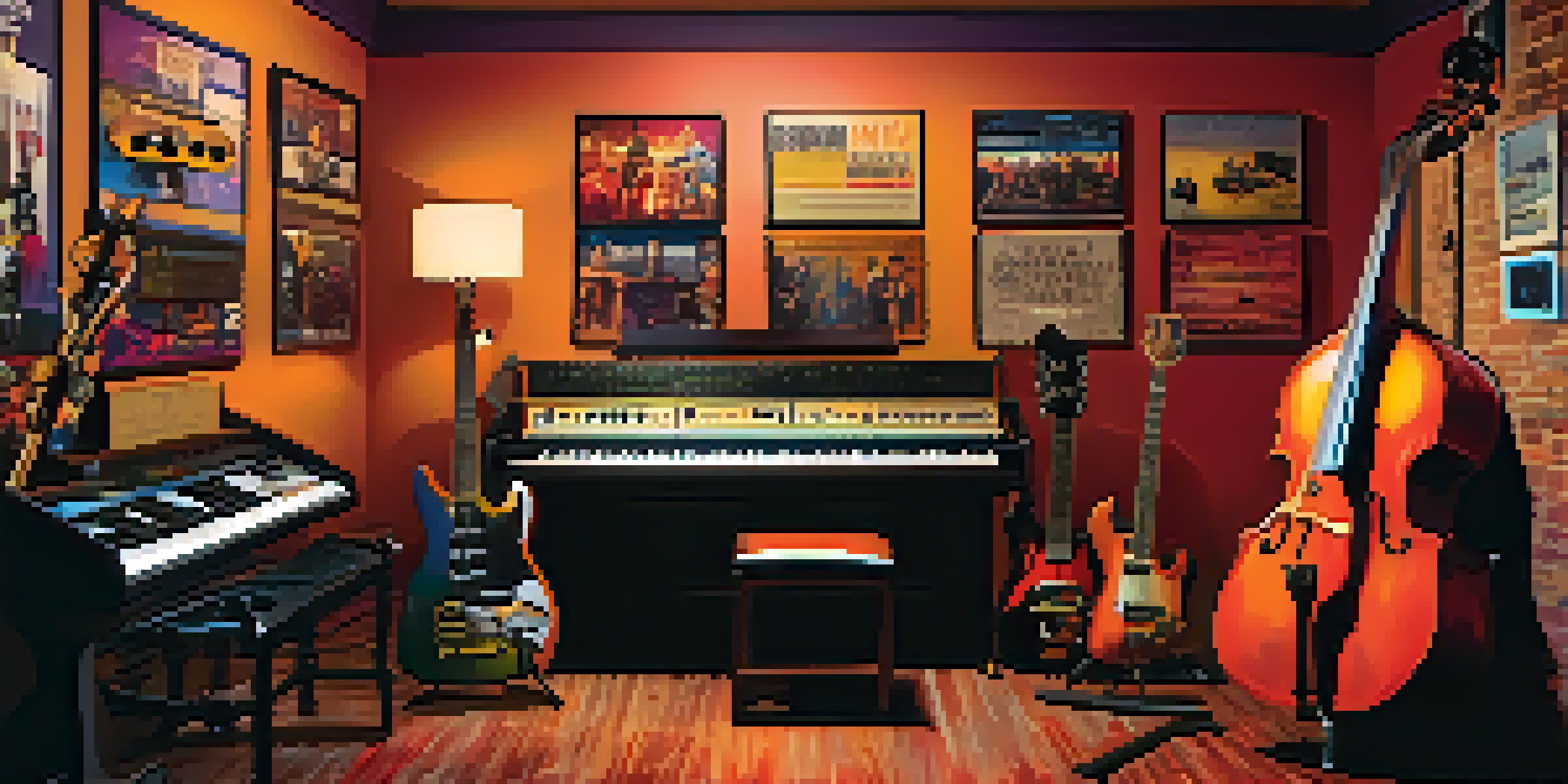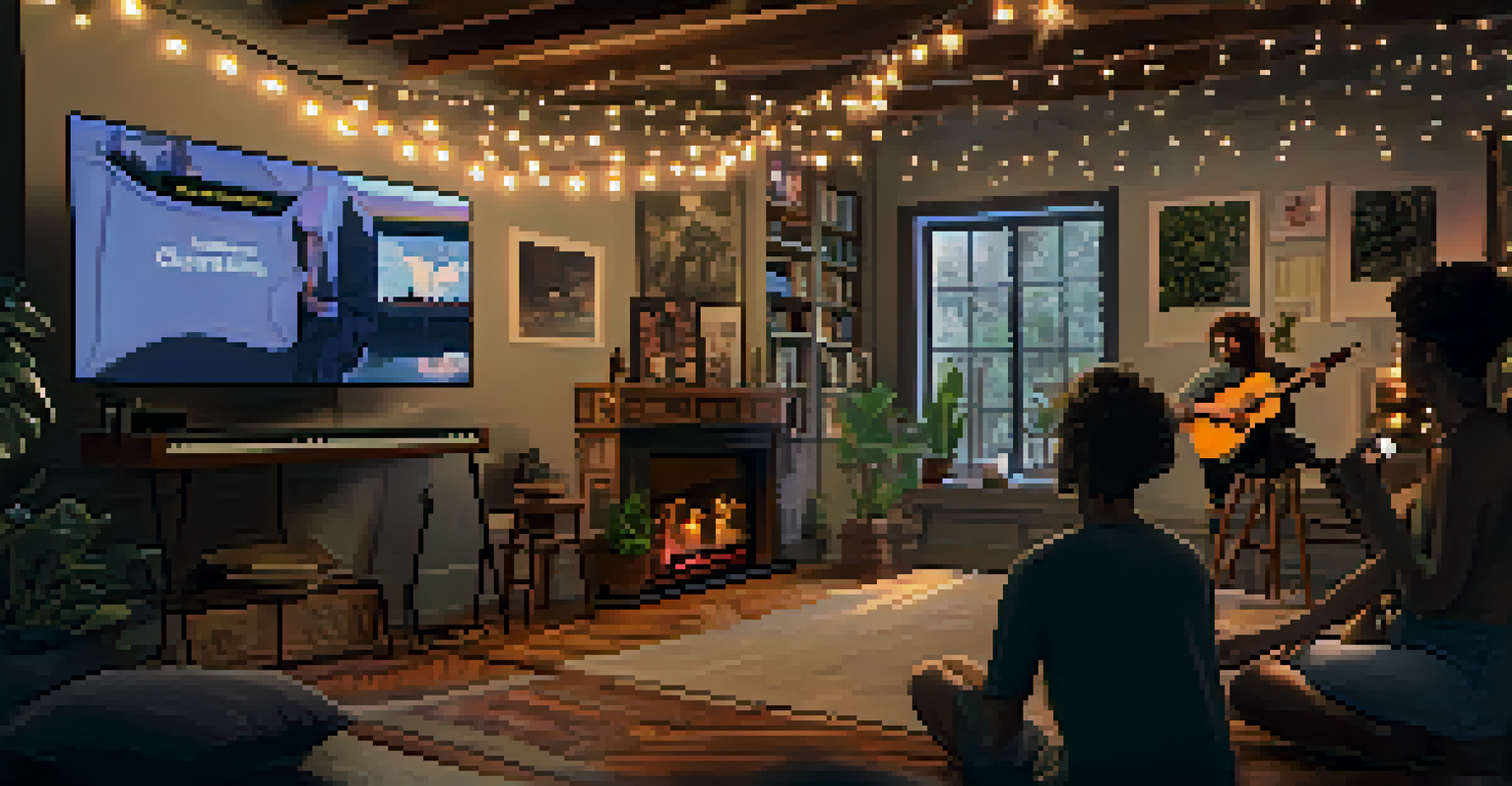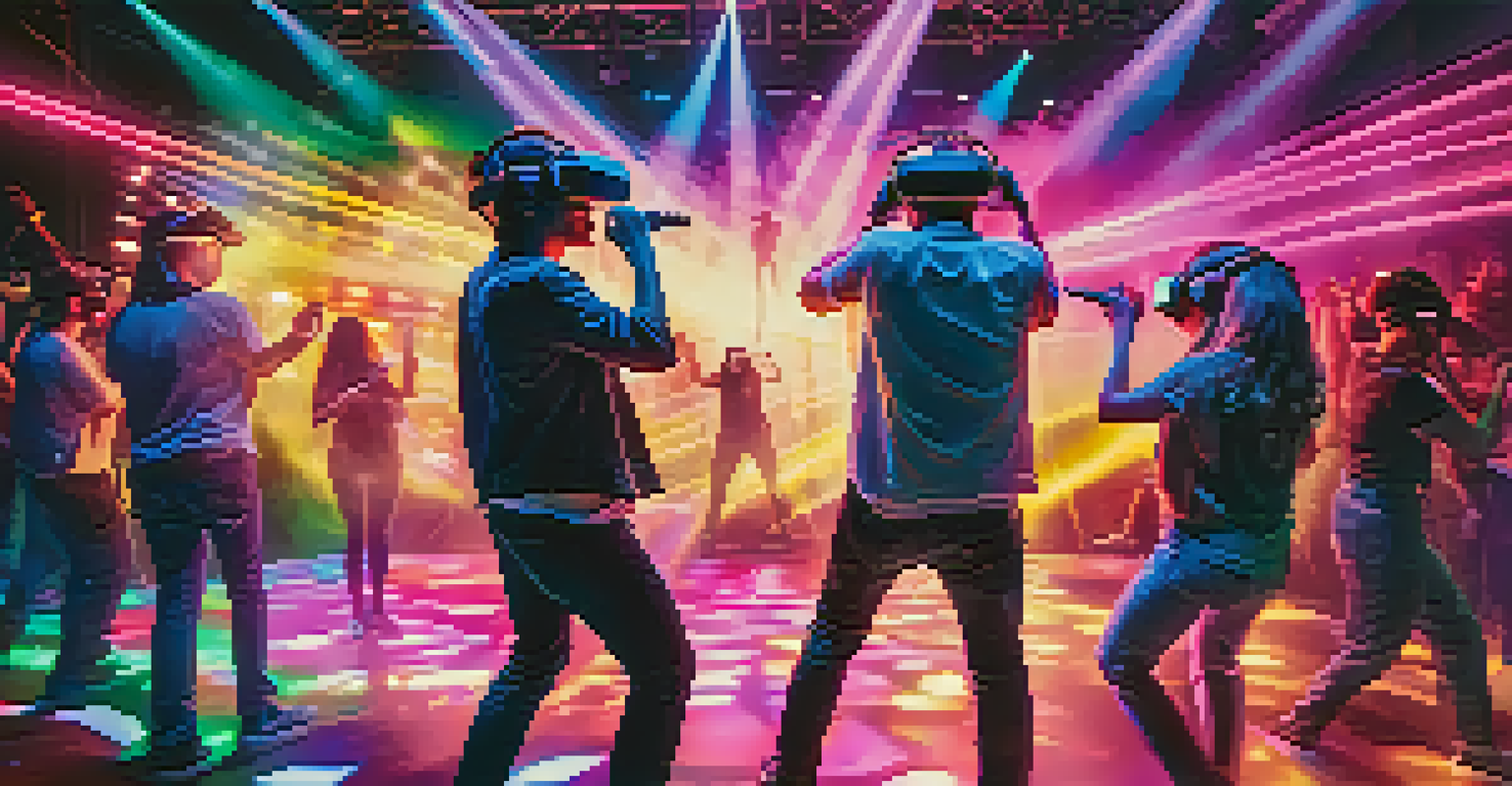How Social Media Changed Artist-Music Fan Interactions

The Rise of Social Media and Its Impact on Music
In the early 2000s, social media began to emerge, allowing artists to connect with fans like never before. Platforms like MySpace paved the way for musicians to share their work directly, bypassing traditional gatekeepers. This shift empowered artists to build their own brands and cultivate dedicated fan bases without needing major label support.
Music is the shorthand of emotion.
As social media platforms evolved, so did the ways in which artists could interact with their audience. Instagram, Twitter, and Facebook became vital tools for engagement, enabling real-time conversations and updates. This accessibility fostered a sense of community, where fans felt they were part of the artist's journey.
The impact of social media on music has been profound, opening doors for independent artists and changing how major artists promote their work. It created an environment where every artist, regardless of their background, has the potential to reach a global audience.
Direct Communication: Breaking Down Barriers
Social media has significantly reduced the distance between artists and their fans. No longer are fans left waiting for album releases or public appearances to connect with their favorite musicians. Instead, artists can share snippets of their lives, thoughts, and upcoming projects instantly through posts and stories.

This direct line of communication has not only increased fan engagement but has also allowed artists to receive immediate feedback. Fans can comment, share, and discuss their thoughts on new music, which encourages artists to be more responsive and adaptable to their audience's preferences.
Social Media Empowers Artists
Social media has revolutionized how musicians connect with fans, enabling them to build their brands and reach global audiences without major label support.
Moreover, this open dialogue fosters a sense of intimacy, as fans feel personally connected to the artists they admire. It transforms the artist-fan dynamic from a one-sided admiration to a mutual relationship built on shared experiences.
The Role of User-Generated Content in Music Promotion
User-generated content has become a powerful tool in the music industry thanks to social media. Fans now create and share their own interpretations of songs, such as covers, dance challenges, and remixes, which can go viral and significantly boost an artist's visibility. This organic promotion often feels more authentic than traditional advertising.
Social media is about the people! Not about your business. Provide for the people and the people will provide you.
Platforms like TikTok have revolutionized music discovery, with songs often gaining popularity through user-generated challenges and trends. When fans create content around a song, it creates a grassroots movement that can propel an artist into the spotlight almost overnight.
This phenomenon illustrates the shift from artists solely promoting their work to a collaborative effort with their fans. It reinforces the idea that music is not just a product but a shared experience that everyone can contribute to.
Building Community: The Power of Fan Engagement
Social media has enabled artists to cultivate vibrant communities around their music. By engaging with fans through live streams, Q&A sessions, and behind-the-scenes content, artists can create a sense of belonging among their followers. This community-building aspect is crucial for sustaining long-term relationships with fans.
Platforms also allow fans to connect with each other, facilitating discussions and collaborations that strengthen the community. Fans can share their interpretations of songs, discuss upcoming concerts, or even organize fan meet-ups, creating a supportive environment centered around their shared love for an artist's work.
Direct Engagement Enhances Loyalty
The direct communication facilitated by social media fosters a sense of intimacy between artists and fans, transforming their relationship into a collaborative experience.
Such engagement not only enhances the fan experience but also allows artists to tap into the collective energy of their community. This connection can lead to increased loyalty, with fans feeling more invested in an artist's success.
The Influence of Analytics on Artist Strategies
With social media, artists now have access to a wealth of data about their audience. Analytics tools provide insights into who their fans are, what content resonates with them, and when they are most active online. This information is invaluable for shaping marketing strategies and personalizing interactions.
Understanding audience demographics allows artists to tailor their music and promotional efforts to better suit their fan base. For example, if analytics show a significant following in a particular region, artists can prioritize tours or special events in that area.
This data-driven approach empowers artists to make informed decisions that enhance fan engagement. It shifts the focus from guesswork to strategic planning, ensuring that their efforts yield the best possible results.
Challenges of Social Media for Artists and Fans
While social media has many benefits, it also presents challenges for both artists and fans. The constant noise of the online world can make it difficult for individual voices to stand out. Artists may struggle to maintain authenticity while trying to engage with a wide audience, leading to burnout or a disconnection from their original artistic vision.
For fans, the pressure to keep up with an artist’s social media presence can be overwhelming. They may feel compelled to engage with every post or update, which can detract from the enjoyment of the music itself. This can lead to a superficial relationship rather than a genuine connection.
Analytics Shape Artist Strategies
Access to audience analytics allows artists to tailor their content and marketing efforts, ensuring they effectively engage with their fan base.
Furthermore, the rapid pace of social media means that trends come and go quickly, making it challenging for artists to stay relevant. Adapting to these changes requires constant effort and creativity, which can be taxing in an already demanding industry.
The Future of Artist-Fan Interactions in a Digital Age
As technology continues to evolve, so will the ways in which artists and fans interact. Innovations such as virtual reality concerts and AI-driven music experiences are on the horizon, promising to redefine the artist-fan relationship even further. These advancements will likely offer even more immersive ways for fans to connect with their favorite musicians.
The rise of decentralized platforms could also change the landscape, allowing artists to engage with fans without intermediaries. This shift could enhance the authenticity of interactions and empower artists to maintain greater control over their work.

Ultimately, the future holds exciting possibilities for the music industry. As artists and fans navigate this digital terrain together, their relationships will continue to evolve, driven by creativity, technology, and a shared passion for music.